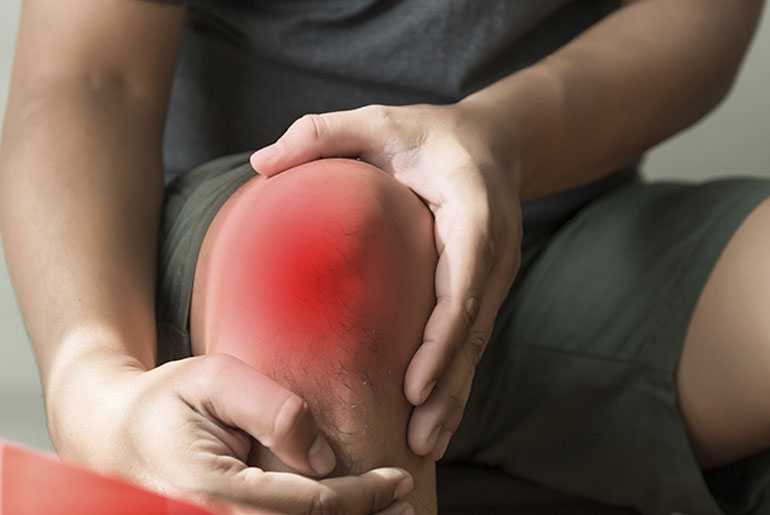Health experts have unveiled the top 10 treatments proven to alleviate joint pain symptoms, slow down the progression of discomfort, and enhance mobility. Joint pain is particularly prevalent among elderly individuals, with osteoarthritis being the primary cause. However, numerous other factors including bursitis, gout, overuse, fibromyalgia, injuries, infections, and systemic diseases can also contribute to joint discomfort. Therefore, it’s imperative to consult with an orthopedician for appropriate diagnosis and tailored treatment to address joint pain effectively.
Osteoarthritis stands as the leading cause of joint pain among the elderly, characterized by the degeneration of joint cartilage. This condition, also referred to as degenerative joint disease, typically arises from the gradual wear and tear on joints over time. As articular cartilage deteriorates, bones within the joint may begin to rub together, resulting in discomfort, stiffness, and swelling. Osteoarthritis can manifest as either primary, attributed to age-related changes, or secondary, stemming from known factors like joint trauma or previous surgeries. While osteoarthritis cannot be cured, several treatments exist to alleviate symptoms, slow its progression, and enhance mobility for affected individuals.
Treatment modalities:
These treatment modalities provide comprehensive approaches for managing osteoarthritis and improving quality of life. Let’s delve deeper into each:
Therapy:
- Physical Therapy: Exercises prescribed by a physical therapist strengthen muscles around the joint, improve flexibility, and reduce pain. These exercises are tailored to individual needs and abilities.
- Occupational Therapy: Occupational therapists help find alternative ways to perform daily tasks without aggravating joint pain, improving overall function and quality of life.
- Weight Loss: Losing excess weight reduces strain on joints, easing symptoms and slowing down disease progression.
Medications:
- Paracetamol: Effective for mild to moderate pain relief, but dosage should be monitored to prevent liver damage.
- Nonsteroidal Anti-Inflammatory Drugs (NSAIDs): Reduce pain and inflammation but may have side effects like stomach upset and kidney damage, so usage should be supervised by a healthcare professional. Topical NSAIDs can be used for localized relief with fewer side effects.
Supportive Treatments:
- Hot or Cold Packs: Alternating between hot and cold packs can alleviate pain and reduce swelling, providing relief throughout the day.
- Assistive Devices: Devices like shoe inserts, insoles, and knee braces distribute weight evenly, reduce pressure on joints, and improve mobility.
Surgical and Other Procedures:
- Corticosteroid Injections: Provide temporary pain relief by reducing inflammation within the joint. However, long-term use can worsen joint damage.
- Lubrication Injections: Hyaluronic acid injections provide cushioning within the joint, relieving pain and improving mobility.
- Realigning Bones (Osteotomy): Surgical procedure to realign bones and redistribute weight away from damaged areas, reducing pain and improving joint function.
- Robotic Total Joint Replacement: Precision surgery to replace damaged joint surfaces with prosthetics, enhancing function and reducing pain with improved accuracy.
These treatment options offer a range of interventions, from conservative approaches like therapy and medications to surgical procedures for advanced cases. It’s important for individuals with osteoarthritis to work closely with their healthcare team to develop a personalized treatment plan that addresses their specific needs and goals. Regular monitoring and adjustments may be necessary to optimize outcomes and improve quality of life.
Joint pain can profoundly impact your mobility and overall well-being, whether stemming from arthritis, injury, or age-related wear and tear. Identifying the root cause of joint discomfort is essential, distinguishing between age-related wear and tear, ‘Green Flag Arthritis,’ or inflammatory types like rheumatoid arthritis, termed ‘Red Flag Arthritis.’ Understanding the underlying condition informs the selection of appropriate remedies and treatment strategies, enabling individuals to effectively manage joint aches and maintain their quality of life.
Indeed, early diagnosis and intervention are critical in managing inflammatory types of arthritis effectively. Symptoms such as involvement of small joints in the hands and feet, prolonged stiffness, and certain blood test results can provide valuable clues indicating the presence of inflammatory arthritis. Treatment approaches for inflammatory arthritis often involve specialized disease-modifying drugs aimed at suppressing inflammation and preventing joint damage. In contrast, age-related wear and tear or “Green Flag Arthritis” may benefit from different therapeutic strategies focused on pain management, lifestyle modifications, and possibly physical therapy. Accurate diagnosis and tailored treatment plans are essential to optimize outcomes and improve the quality of life for individuals living with arthritis.
These are excellent remedies for managing early stages of non-inflammatory arthritis, aimed at reducing pain, improving joint function, and enhancing overall well-being. Let’s elaborate on each remedy:
- Exercise and Stretching: Gentle exercises like walking, swimming, or cycling strengthen muscles around joints, reducing stress on them. Stretching exercises improve flexibility and range of motion, promoting better joint health.
- Hot and Cold Therapy: Heat therapy with warm baths or heating pads improves blood circulation and relaxes stiff muscles. Cold therapy using ice packs or cold compresses reduces swelling and numbs pain receptors, providing temporary relief.
- Over-the-Counter Medications: NSAIDs like ibuprofen or naproxen alleviate joint pain and inflammation. It’s crucial to follow recommended dosages and consult healthcare professionals for long-term usage due to potential side effects.
- Topical Creams and Ointments: Pain-relieving creams containing menthol, camphor, or capsaicin provide localized relief by increasing blood flow and creating sensations of warmth or coolness when applied directly to affected joints.
- Weight Management: Maintaining a healthy weight through diet and exercise reduces strain on weight-bearing joints like knees and hips, alleviating pain and inflammation.
- Glucosamine and Chondroitin: These supplements support joint health by promoting cartilage formation and reducing inflammation. While research results vary, some individuals experience relief from joint pain with regular use.
- Massage Therapy: Professional massage relaxes tense muscles, improves circulation, and promotes relaxation. Techniques like deep tissue massage target specific areas of discomfort, providing relief.
In cases of advanced arthritis, joint replacement surgery may be necessary. However, in the early stages, these remedies offer effective ways to manage symptoms and improve quality of life. It’s essential to consult healthcare professionals to tailor a treatment plan that suits individual needs and preferences.
Disclaimer:
The information contained in this article is for educational and informational purposes only and is not intended as a health advice. We would ask you to consult a qualified professional or medical expert to gain additional knowledge before you choose to consume any product or perform any exercise.








